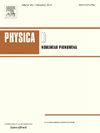Flow time history deep learning for feature decomposition and disentanglement
IF 2.7
3区 数学
Q1 MATHEMATICS, APPLIED
引用次数: 0
Abstract
Machine intelligence has recently played an increasingly important role in the study of fluids. It would be a promising way to use machine intelligence to decompose and disentangle the massive flow data to mine the underlying flow knowledge. In this study, by extracting and disentangling the temporal features hidden in the flow time history (FTH) data, the flow feature is decomposed and disentangled in a deep learning manner. To preserve the spatial information of data, observed sampling at each position is compressed into a low dimensional latent code by the encoder, and then the decoder acts as a mapping from the latent space to the high dimensional FTH space, forming an unsupervised FTH feature decomposition algorithm. The laminar and turbulent flow around circular cylinder at Re=100 and Re=3900 are analyzed using FTH deep learning. Results of laminar case show that the code parameters of each FTH sample represent the weight of basic temporal features at that particular flow position, whereas the distribution of the latent code represents the corresponding spatial feature. Additionally, the turbulence results indicate that the proposed method achieves more accurate reconstruction outcomes than conventional linear-theory-based methods while maintaining independence of decomposed feature. This work shows that the FTH deep learning models are high accuracy approaches to learn the disentangled flow knowledge directly from the raw point-based data.
求助全文
约1分钟内获得全文
求助全文
来源期刊

Physica D: Nonlinear Phenomena
物理-物理:数学物理
CiteScore
7.30
自引率
7.50%
发文量
213
审稿时长
65 days
期刊介绍:
Physica D (Nonlinear Phenomena) publishes research and review articles reporting on experimental and theoretical works, techniques and ideas that advance the understanding of nonlinear phenomena. Topics encompass wave motion in physical, chemical and biological systems; physical or biological phenomena governed by nonlinear field equations, including hydrodynamics and turbulence; pattern formation and cooperative phenomena; instability, bifurcations, chaos, and space-time disorder; integrable/Hamiltonian systems; asymptotic analysis and, more generally, mathematical methods for nonlinear systems.
 求助内容:
求助内容: 应助结果提醒方式:
应助结果提醒方式:


